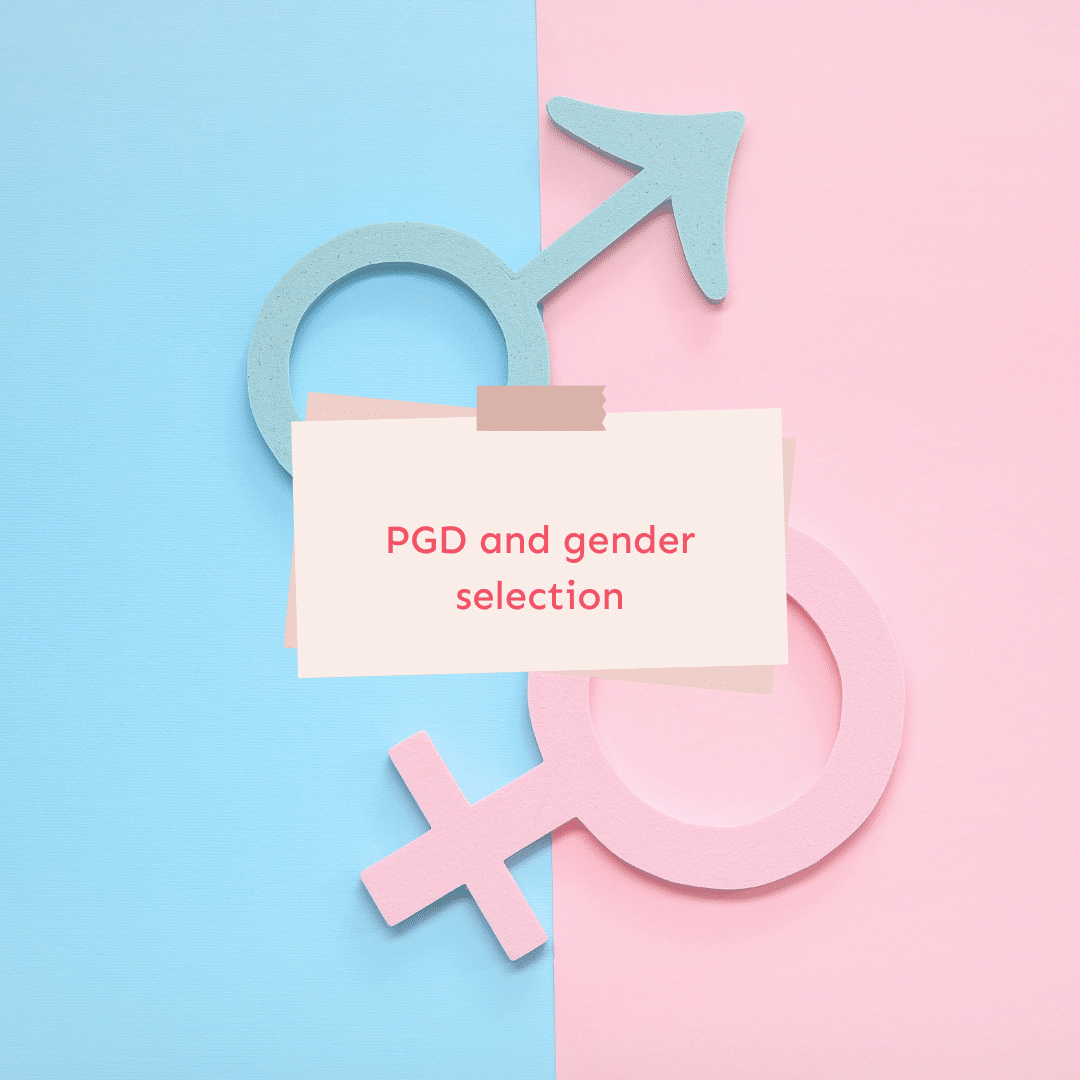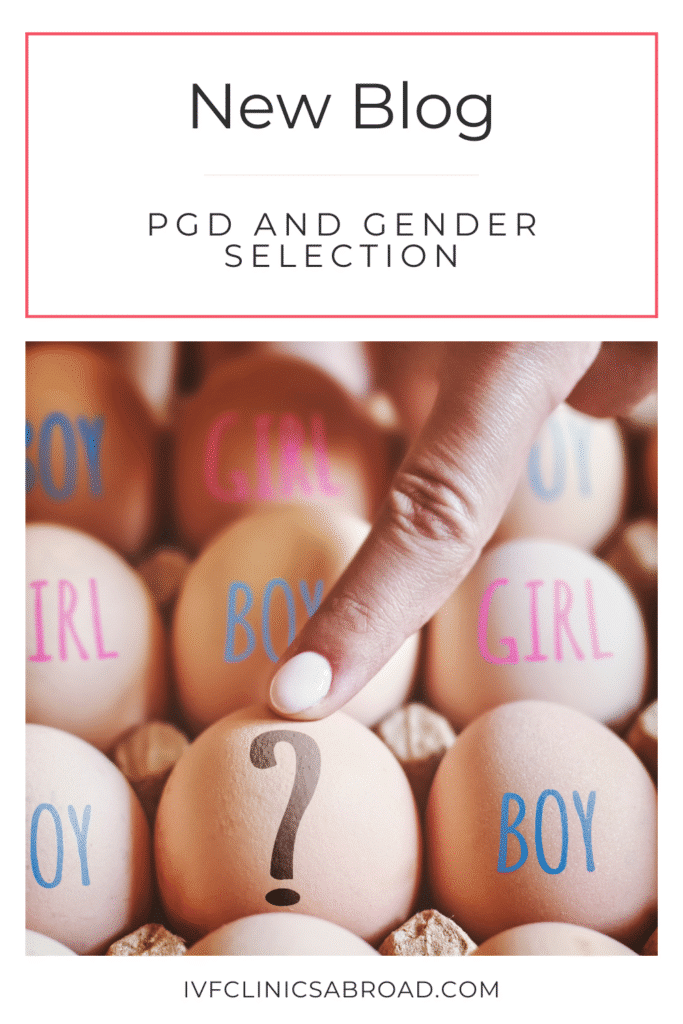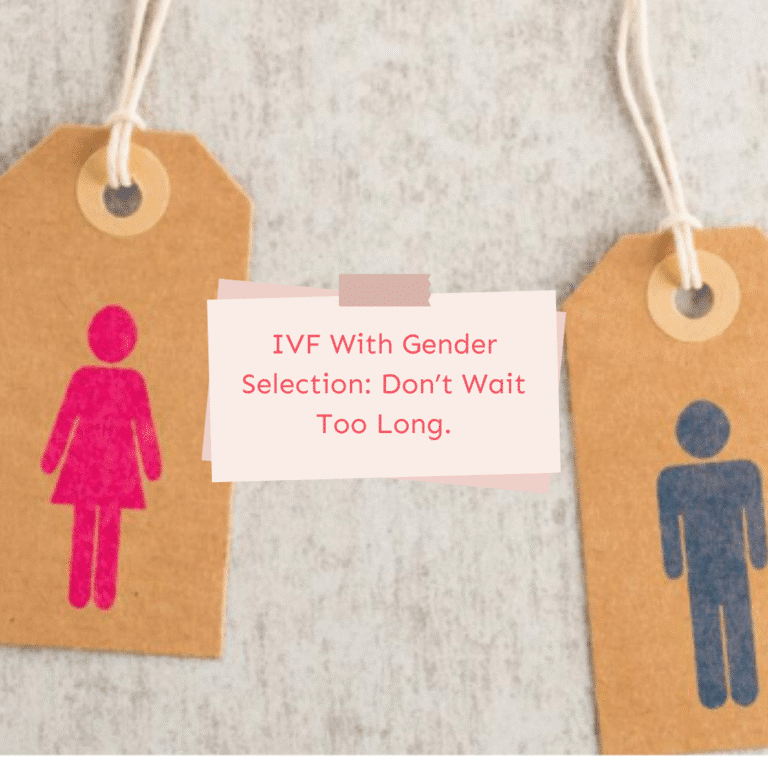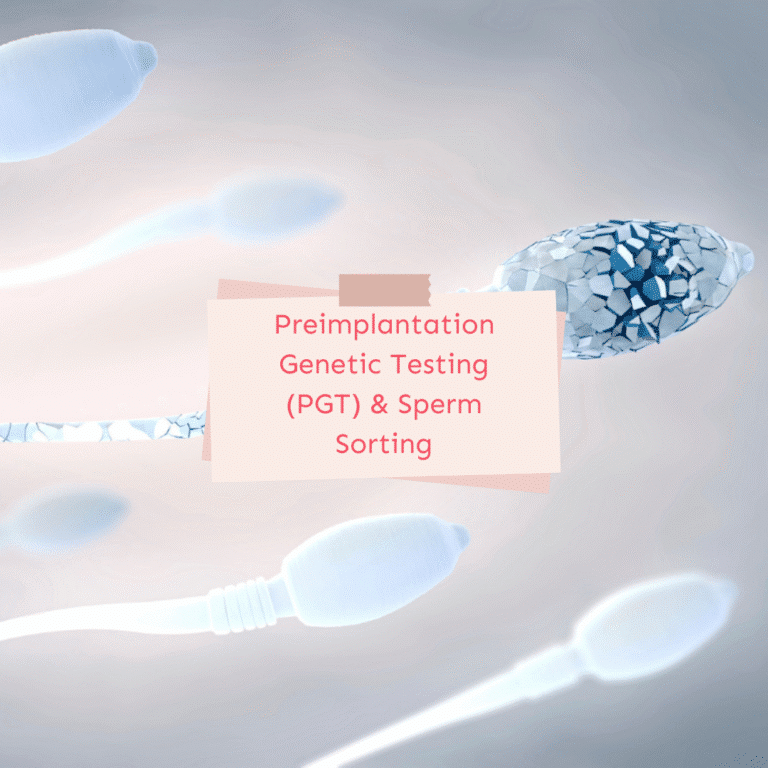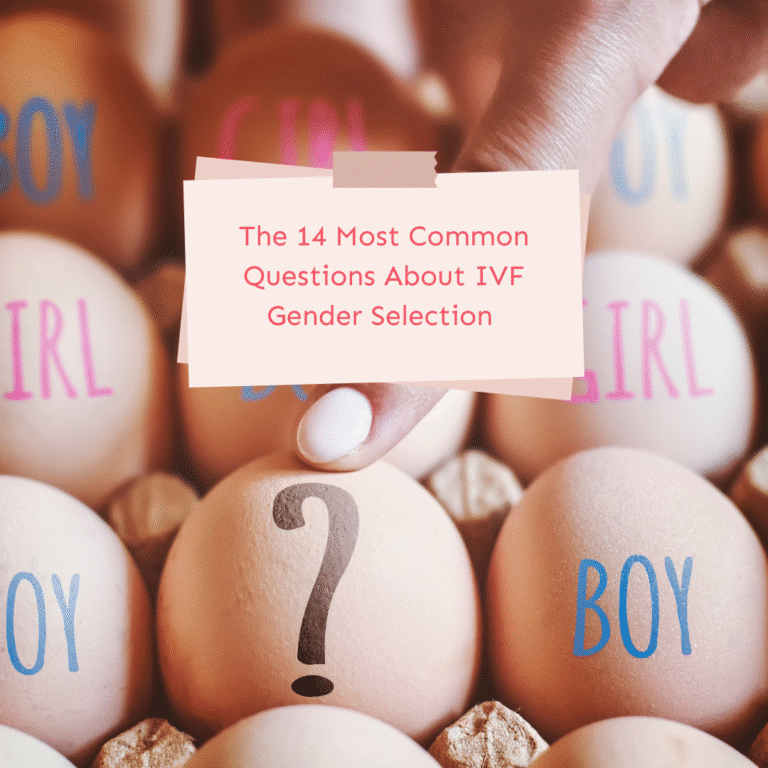Preimplantation genetic diagnosis (PGD) and IVF gender selection: select a fertility treatment with IVF sex selection, select the gender of your choice with high success rates
What is PGD and how does it relate to gender selection
For many women, the idea of choosing the gender of their next baby might sound like science fiction. But in the world of IVF and PGD, this is already part of modern fertility treatment. Gender selection through preimplantation genetic diagnosis is a way to select the gender of your child before the embryo is even transferred to the uterus. It’s used not only for personal or emotional reasons like family balancing, but also for preventing serious inherited genetic conditions. This option is especially relevant when reproductive technologies such as IVF are already being used – for example, due to age, fertility challenges or a genetic disorder in the family.
Using PGD in conjunction with IVF gives parents the opportunity to choose the gender of their baby and to avoid passing on certain genetic diseases. PGD involves removing a few cells from an embryo and doing a detailed genetic analysis before it’s implanted. This analysis can identify gender, screen for genetic abnormalities and even gives prevention of genetic diseases that run in the family. Many parents turn to gender selection IVF for this exact reason – it combines the emotional aspect of gender balance with the medical need to ensure a healthy baby. The process is carried out during an IVF procedure and must follow a clear treatment process with a qualified IVF specialist.
Thanks to IVF technology and genetic screening to identify chromosomal abnormalities or single gene disorders, PGD can only be done in a controlled setting, usually at an IVF clinic with experience in PGD testing. Choosing this path can bring clarity and peace of mind – especially when patients undergoing IVF are looking for both a high chance of pregnancy and a healthy outcome.
Understanding preimplantation genetic diagnosis in IVF
Preimplantation genetic diagnosis (PGD) is used to screen embryos before implantation. It happens during an IVF treatment, where eggs and sperm are fertilised in the lab. Once the embryos develop, specialists perform genetic screening to identify any abnormalities and determine the gender before implantation. This means parents can select the gender of their baby before the embryo transfer process even begins.
The main reason for gender selection using PGD is often linked to prevent genetic diseases or achieving gender balance in the family. PGD procedures are most common when families want to avoid passing on a genetic disease or when they already have several children of one gender and wish to have the other – this is often referred to as family balancing. Since preimplantation genetic testing looks at the genetic makeup of each embryo, it also allows parents to choose embryos that are chromosomally normal and more likely to result in a successful pregnancy.
The difference between PGD and other testing methods
It’s easy to confuse PGD with other forms of genetic testing. But there are key differences. PGD is focused on screening embryos created during IVF before they are transferred to the uterus. Other methods, such as general genetic screening or blood tests, happen either before or during early pregnancy – and they cannot influence embryo selection. PGD gives you the option to identify gender and prevent birth defects or genetic abnormalities before a pregnancy even begins.
Because PGD testing is part of the IVF journey, it can also increase pregnancy rates by helping clinics select the healthiest embryos. Unlike sperm sorting, which only looks at sperm chromosomes (XX or XY), PGD gives a full picture – not just of gender, but of the embryo’s overall condition. When PGD is used as part of gender selection programs, it ensures that embryos of the desired gender and with normal genetic development are selected for transfer.
This makes PGD a reliable method for parents to select the gender of their baby – and at the same time lower the risk of miscarriage or health issues. While not every embryo may meet the criteria, the selection gives families the chance to make gender selection in a responsible and informed way.
Reasons for gender selection with IVF
Choosing the gender of a future child is a deeply personal decision. With IVF and PGD, it becomes possible to plan this step carefully and with intention. Whether the motivation is emotional, practical or medical, gender selection allows families to make thoughtful choices during their fertility journey.
Common reasons for gender selection and family balancing
Some families dream of raising both a son and a daughter. When they already have children of one gender, the wish to welcome a child of the opposite sex feels natural. This idea – often called family balancing – is not about preference, but about rounding out the family dynamic in a way that feels complete.
Medical indications and personal motivations behind sex selection
In other cases, the choice has medical reasons. Certain genetic conditions are more likely to affect one sex, and selecting the gender can help prevent passing on a serious illness. But even without a medical indication, personal experiences, cultural background or previous loss can play a role. Whatever the reason for gender selection, it’s valid – and deserves care, respect and proper guidance.
How PGD testing works in fertility treatment
Step-by-step process of PGD testing during IVF
After egg and sperm are combined in the lab, embryos are closely monitored as they develop. A few days later, a small number of cells is taken from each embryo. These cells are then analysed in a specialised lab. The goal is to check the genetic structure and look for any signs of abnormality – as well as to determine the gender of each embryo before one is chosen for transfer.
How embryos are analysed for gender and health
To understand both the health and the gender of an embryo, specialists look at the chromosomes. They can identify whether an embryo has an XX or XY pattern, and whether there are any signs of chromosomal abnormalities. This screening gives a clearer picture of which embryos are suitable for transfer – ideally resulting in a healthy pregnancy and reducing the risk of passing on a genetic disorder.
Success rates and outcomes of IVF with PGD
PGD combined with IVF is considered one of the most accurate methods for gender selection. While no fertility treatment can offer a guarantee, this technique is known for its high precision when it comes to identifying the gender before implantation.
What the data shows about gender selection success rates
Current studies show that the accuracy of PGD in identifying the gender of an embryo is close to 99 percent. When combined with good lab conditions and a healthy uterine environment, the pregnancy rates are also encouraging. However, the final outcome still depends on many factors, including embryo quality and timing.
Factors that influence your chances of success
Age plays a role, as does the number of embryos available for testing. A higher number of embryos may increase the chance of finding one that is both healthy and of the desired gender. The experience of the IVF clinic, the lab techniques used and your overall health also have an impact on how successful the treatment will be.
“Choosing the gender of your child is never just about preference – it’s about peace of mind, family balance, and making the path to parenthood feel a little more yours.”
Nathalie Wiederkehr
Choosing the right IVF clinic for gender selection
Not every IVF clinic offers gender selection – and not every country allows it. That’s why choosing the right place for your treatment is more than just comparing success rates. It’s also about understanding the legal situation and the way clinics work within those rules.
Why only a few countries allow or tolerate gender selection with PGD
In many parts of the world, sex selection for non-medical reasons is restricted or even banned. Some countries, like the USA, clearly allow it. Others don’t officially permit it, but also don’t punish it – which creates a legal grey zone. In countries like Northern Cyprus, clinics can offer PGD without being in conflict with national law, simply because there are no specific legal restrictions. It’s important to know where you stand – and where your treatment options are truly available.
How to compare IVF clinics offering PGD and navigate legal grey zones
Look for clinics with proven experience in PGD and transparent communication. A good clinic won’t just talk about results – it will explain the full treatment process, the legal framework, and what you can expect. Since very few countries offer this option, your clinic search will always start with your destination. If you’re unsure where gender selection is possible, you can download our guide – it lists countries where PGD is offered and gives an overview of prices, laws and success rates without naming specific clinics.
Selection methods used for choosing the gender
There are different ways to influence the gender of a baby, but not all of them are equally reliable. PGD is currently the most precise method – and often the only one recommended by specialists when families want clarity and safety.
How PGD compares to other selection methods
Compared to other approaches, PGD is the only method that checks the embryo itself. While older techniques try to separate sperm based on whether they carry an X or Y chromosome, PGD looks directly at the embryo’s chromosomes before transfer. That means the gender can be confirmed – not just assumed. It also allows doctors to screen for other health issues at the same time.
Why sperm sorting is rarely used alone
Sperm sorting methods like MicroSort or SwimUp were once considered promising, but they come with limitations. They cannot guarantee results and offer no insight into the health of the embryo. That’s why these techniques are rarely used on their own today. If they are used at all, it’s usually in combination with PGD – to increase the chance that embryos of the preferred gender are created in the first place.
What to consider before starting IVF gender selection
Starting IVF with PGT-A is a big decision – not just medically, but also emotionally and logistically. It’s important to feel ready, understand what lies ahead, and know what kind of support you might need along the way.
How to prepare emotionally and practically for PGD treatment abroad
Even if the process is well explained by your clinic, it’s normal to feel a mix of hope, stress and doubt. Taking time to understand each step – from stimulation to embryo transfer – can help you feel more in control. Make sure to plan enough time for travel, recovery and follow-up, especially if you’re going abroad. Some women also find it helpful to speak with someone who’s been through it before.
Tips for planning a discreet trip for gender selection without anyone knowing
Not everyone feels comfortable sharing the reason for their trip. If you’d prefer to keep your treatment private, there are ways to plan it so it simply looks like a holiday. From booking the right type of hotel to choosing a destination that doesn’t raise questions – small details can make a big difference. If this speaks to you, we’ve written a separate blog post explaining exactly how to do that step by step.
Final thoughts and next steps
Choosing IVF with PGD for gender selection is not just about science – it’s about your hopes, your family and your future. Whether your reason is medical, emotional or simply personal, you deserve clear information and quiet support as you take the next step.
Planning your treatment abroad with PGD and gender selection
Because only a few countries offer this option, many families choose to travel abroad for treatment. That brings new questions – about language, timing, legal rules and of course, finding a clinic you can trust. Planning early can take away a lot of pressure and give you space to focus on what matters most: starting this journey with clarity and calm.
Download your guide with clinic info, laws and prices for IVF with PGD
If you’re not sure where to begin, we’ve put together a guide that explains which countries allow gender selection with PGD – and under what conditions. It includes practical details about legal frameworks, estimated prices, and what you can expect from clinics in destinations like Northern Cyprus, Albania, UAE, the USA and other selected regions. You can download the guide quietly and read it in your own time. It’s a helpful starting point if you want honest, neutral information before making any decisions.

